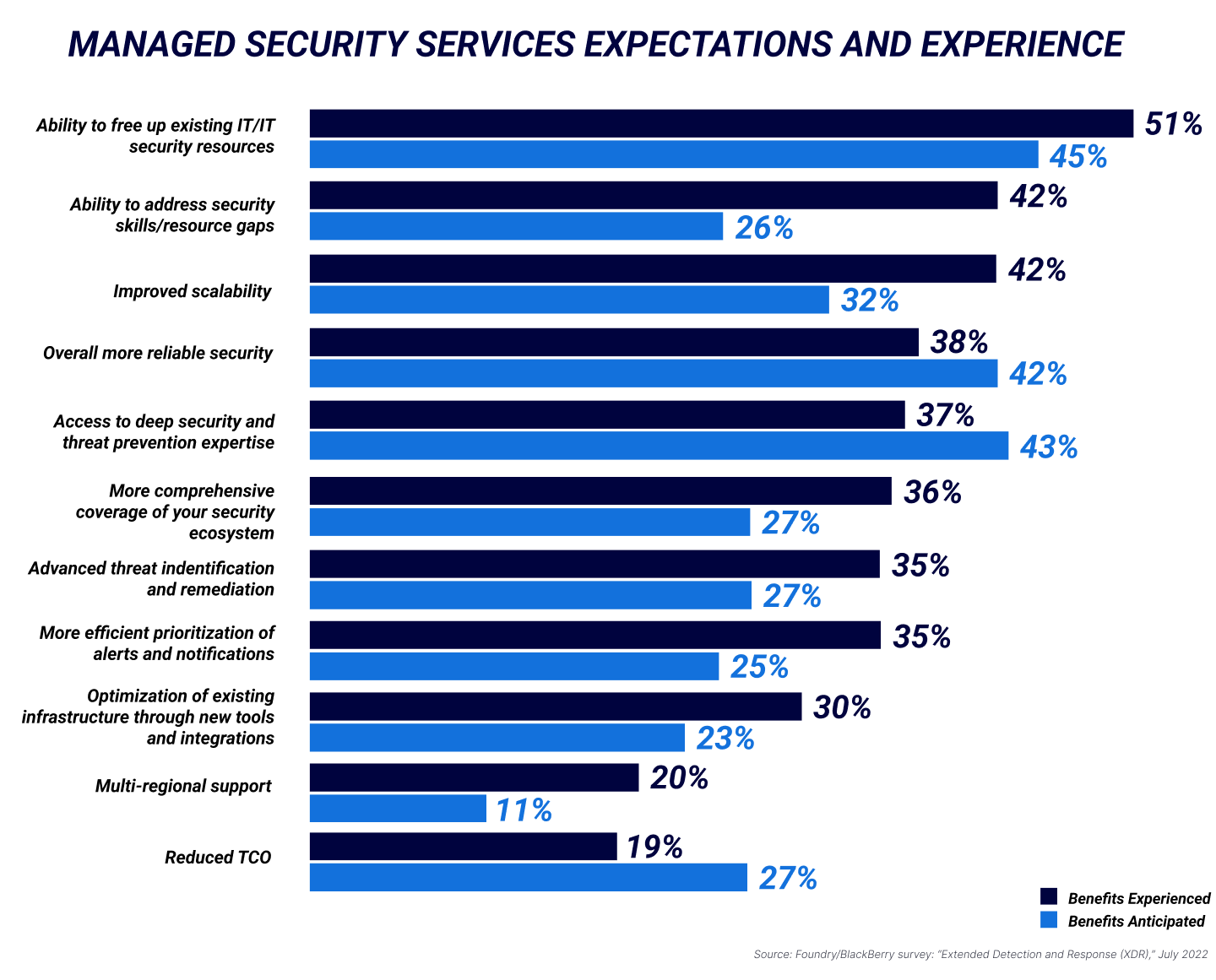Managed Detection and Response (MDR) and Managed XDR (Managed Extended Detection and Response) are both cybersecurity services that pair endpoint security technologies with human expertise. Both provide organizations tools and personnel for the purposes of threat hunting and incident management. Both act to augment an organization’s existing cybersecurity capabilities.
But Managed XDR differs from MDR in that it extends the MDR framework by incorporating Extended Detection and Response (XDR) visibility spanning the entire enterprise—and all its potential attack surfaces.

How Is Managed XDR Different from MDR?
Both Managed XDR and MDR are based on the EDR approach to endpoint security—providing endpoint security beyond traditional scanning of incoming content to continuously monitor endpoints for indicators of compromise (IOC). Both Managed MXDR and MDR proactively mobilize defenses to neutralize identified threats and push alerts to SOC team members for further investigation.
Managed XDR and MDR are also similar in that they are outsourced security services that transfer responsibility for network security to a team of security experts that specialize in threat detection and response.
However, Managed XDR programs also benefit from the advanced capabilities of XDR’s approach to extended security. Specifically, Managed XDR includes the ability to correlate security telemetry data across the network and can deploy a cohesive real-time response to identified threats across the whole network environment.
What’s Better: MDR or Managed XDR?
Companies of all sizes must now contend with a growing number of devices, each one representing a new addition to their attack surfaces. And they must do so while balancing skill gaps and resources shortages, all while hoping they don’t end up in an adversary’s crosshairs. This is challenging enough for larger organizations, but for small and mid-sized businesses, it verges on impossible.
As a human-centric subscription-based 24x7x365 Managed XDR service, CylanceGUARD® provides the expertise and support businesses need. CylanceGUARD combines the comprehensive expertise embodied by BlackBerry Cybersecurity Services with AI-based Endpoint Protection (EPP) through CylancePROTECT®, continuous authentication and analytics through CylancePERSONA™, and on-device threat detection and remediation through CylanceOPTICS®. In short, it provides businesses with everything they need to contend with a modern threat landscape—no matter what that landscape throws at them.